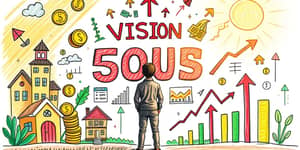
As we stand at the threshold of tomorrow’s markets, it is natural to feel both excitement and trepidation. Yet, by navigating uncertainty with strategic foresight, we can turn ambiguity into opportunity. This article invites you on a deep dive into the data, trends, and narratives that will shape the global economy for years to come.
We will explore forecasts for GDP growth, the transformative power of AI, the rise of sustainable energy, and the evolving role of private equity. Along the way, you will gain practical insights and actionable perspectives to fuel your own driving economic resilience and growth.
The global economy is forecast to expand at a rate of 2.9% in both 2025 and 2026, up from 2.6% in 2024. Advanced economies like the United States are expected to lead this charge, with the U.S. projected to grow by 2.4% in 2025. However, the global growth outlook comes with caveats: policy shifts, geopolitical tensions, and environmental risks could temper these gains.
Regionally, Asia maintains its dynamism. China’s GDP is anticipated to accelerate to 5.2% in 2025, reflecting robust domestic demand and ongoing structural reforms. In contrast, the European Union and the United Kingdom may experience more muted growth, with forecasts of 1.2% and 1.1%, respectively. Such regional variations shaping future fortunes underscore the importance of tailored strategies.
Despite these promising projections, global prospects are tempered by mitigating risks through collaboration. Climate-related shocks, trade disputes, and shifting monetary policies could introduce volatility. Recognizing these headwinds while preparing to seize emerging opportunities will be vital for businesses, governments, and investors alike.
Few forces are as disruptive as artificial intelligence. With investments in AI startups soaring into the tens of billions, every sector—from manufacturing to healthcare—is undergoing transformation. Companies that harness the transformative power of AI gain competitive advantages through enhanced efficiency, predictive analytics, and personalized customer experiences.
In education, AI-driven platforms are tailoring learning paths to individual students, while in finance, algorithmic trading systems are optimizing portfolio performance in real time. The energy sector itself stands to benefit, as AI tools manage grid loads and anticipate maintenance needs. Achieving robust and resilient technological integration will distinguish industry leaders from followers.
The transition to clean energy is no longer a distant ambition—it is an accelerating reality. Governments around the world are expanding tax credits and subsidies, catalyzing a clean energy investment surge that spans wind farms, solar arrays, and next-generation battery storage. Investors are flocking to sustainable energy projects seeking both impact and returns.
BloombergNEF’s New Energy Outlook highlights how rising global demand, partly driven by AI adoption and electrification of transport, will double renewable capacity by 2030. Innovations in green hydrogen and advanced materials promise to lower costs further. The pursuit of sustainable progress is evolving from moral imperative to sound financial strategy.
Private equity firms continue to promise investors the allure of higher yields, often relying on operational efficiencies and strategic acquisitions to deliver outsized returns and strategic discipline. Sectors such as healthcare and education have seen increased PE involvement, with firms injecting capital to drive scale and innovation.
Public markets, too, reflect optimism. The S&P 500 is expected to deliver earnings growth of 7.6% in both 2025 and 2026. While valuations remain elevated, disciplined investors can leverage impactful market projections for investors by focusing on sectors with secular tailwinds—technology, clean energy, and selective consumer segments.
Every forecast carries uncertainties. Rising debt levels, demographic shifts, and potential policy missteps could introduce volatility. At the same time, breakthroughs in AI, green technologies, and healthcare offer unprecedented avenues for growth. By embracing change with informed strategy, stakeholders can navigate a landscape of both risk and reward.
Each of these themes represents a fork in the road—one path leading to stalled progress, the other to accelerated innovation and prosperity. Success depends on foresight, agility, and collaboration.
As you chart your own course through this complex terrain, remember that future fortunes favor those who prepare. By synthesizing data, embracing innovation, and committing to sustainable practices, you can transform long-term projections into tangible outcomes. The road ahead is filled with promise; seize it with both vision and resolve.
References













